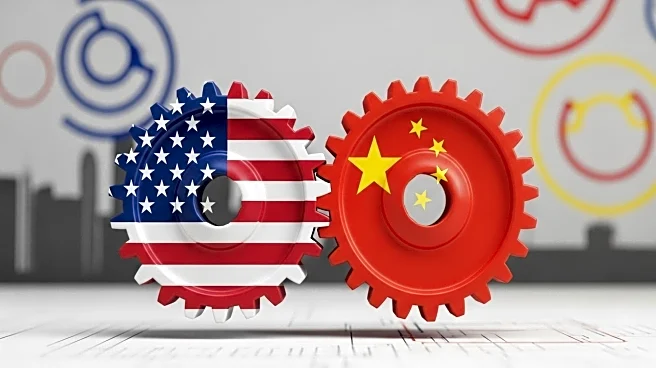What is the story about?
What's Happening?
The People's Bank of China (PBOC) has set the official yuan midpoint at its strongest level in nearly a year, despite ongoing trade tensions with the United States. On Monday, the PBOC established the midpoint rate at 7.1007 per dollar, marking the strongest rate since November 6, 2024. This adjustment was 203 pips firmer than a Reuters estimate, indicating an official attempt to stabilize the yuan. Market participants have interpreted this move as a strategic effort by China to maintain currency stability amid the current economic climate.
Why It's Important?
The strengthening of the yuan midpoint by the PBOC is a critical development in the context of U.S.-China trade relations. A stable yuan can help mitigate the impact of trade tensions on China's economy, potentially reducing volatility in financial markets. This move may also influence global currency markets, affecting exchange rates and international trade dynamics. For U.S. businesses and investors, a stable yuan could mean more predictable costs and reduced risks associated with currency fluctuations.
What's Next?
The PBOC's decision to strengthen the yuan midpoint may lead to further monetary policy adjustments as China navigates its trade relationship with the U.S. Market observers will be watching for additional measures from both countries that could impact currency stability and trade flows. The ongoing trade tensions may prompt further diplomatic engagements or negotiations aimed at resolving economic disputes, with potential implications for global trade policies.
Beyond the Headlines
The PBOC's actions reflect broader economic strategies aimed at maintaining China's financial stability and competitiveness in the face of external pressures. This situation underscores the interconnectedness of global economies and the role of currency management in international relations. Long-term implications may include shifts in global trade patterns and increased focus on currency diplomacy as a tool for economic influence.
AI Generated Content
Do you find this article useful?













